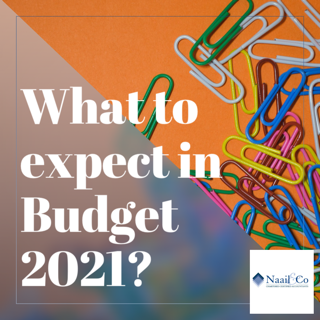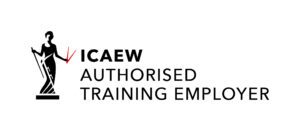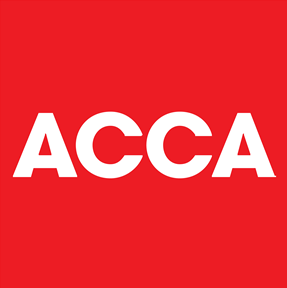What to expect in Budget 2021?
Table of Contents
What to expect in Budget 2021?
On 3rd March, Chancellor Rishi Sunak is set to deliver the government’s Budget for 2021, which is expected to set out further plans to help the British economy.
Chancellor Sunak said,
“I know how incredibly tough the past year has been for everyone, and every job lost is a personal tragedy. At the Budget next week, I will set out the next stage of our Plan for Jobs, and the support we’ll provide through the remainder of the pandemic and our recovery.”
Ms Anneliese Dodds, Labour’s shadow chancellor, criticised the government for announcing its roadmap to ending lockdown “without the clarity of business support”. She claimed;
“Some businesses were throwing in the towel because the government was taking too long to confirm what business support would be available to them over the next six months”.
As the UK borrowed over £280bn to support jobs last year, we should finally get some answers to the big question:
How are we going to pay for COVID-19?
Whether it’s through tax hikes, spending cuts, investments or even a new method for financial recovery, the Budget is being discussed as the most anticipated Budget in a generation. The ‘elephant in the room’ question is to what extent he will increase or reform taxation or will he retain the status quo for the time being? If he does seek to start a process of reform or increase what areas will he target? It will be interesting to know if he goes for headline reform i-e increases in tax rates or opts for good old “tinkering approach”.
Here are some of the key areas we will particularly be interested in;
1. Furlough extension
Having been extended 3 times, the furlough scheme is due to expire on April 30, 2021. There is a mounting speculation that Furlough scheme (CJRS) will be extended to support businesses and workforce, as the country is likely to be in some form of lockdown throughout March and beyond. Prime Minister Boris Johnson reassured during his roadmap out of lockdown on Monday that saying the Government “will not pull the rug out” and will protect jobs and livelihoods in next week’s Budget.
Chancellor was strongly criticized for delay in announcing the extension back in November, which resulted in avoidable redundancies. He will certainly be keen to avoid the same mistake. However, considering the sheer magnitude of claims cost, he will ensure that scheme isn’t in place for any longer than necessary.
2. Self-employed grant
Just like furlough extension (see above), the Chancellor is expected to announce 4th Self-employed Grant (Self Employed Income Support Scheme – SEISS), despite it taking place a month after the grant period begins. the period will be set to cover the months February, March and April. In all previous grants, the details of the grants were made available before the grant period started. Industry experts are speculating Chancellor would like the big occasion of budget to make this much awaited announcement.
3. Universal Credits
There was a weekly rise of £20 in universal credits last year to help low-income families through the pandemic and lockdown restrictions but the boost, worth £1,040 a year, was only a temporary measure set to last a year. The Chancellor is under pressure to extend this support measure beyond March. It has been reported in press that Chancellor was open to the idea. ITV reported on 19th February that the support is expected to extend for further 6 months.
It is also reported that instead of £20 weekly rise to universal credit, Chancellor could offer Universal Credit claimants a one-off payment of £1,000 but the idea has been rejected by Therese Coffey, Work and Pensions Secretary.
4. VAT
A wider cut to the standard rate of VAT cannot be ruled out completely but considering VAT accounts for one fifth of tax revenue, protecting that stream in the longer term will be critical.
However, with departure from EU may also mean that treasury will have flexibility and control to make a range of small technical changes to the VAT rules that HMRC has sought for many years – most of which can be expected to increase the VAT take.
The temporary reduction of VAT rate from 20% to 5% for hospitality sector first came into force in July 2020 and then extended until 31 March 2021. This extension was meant to help protect 2.4 million jobs through the winter. Pubs, restaurants and other pressure groups are demanding further extension to this temporary rate cut beyond end of March to first kickstart and then sustain the sector. Also, it would not be too surprising if the Chancellor announced a new a successfully tried and tested “Eat out to help out” scheme to support the sector during the summer.
5. Corporation Tax
British companies currently pay 19% corporation tax on their taxable profits. The rate has come down a long way from 28% back in 2010. The UK has seen a downwards trend on corporation tax rates for nearly 50 years but there have been rumours that the Treasury is considering a rise in corporation tax rates, starting later this year, and moving the rates up in stages to 23% by 2024. This will certainly not be a popular move and might not seem very supportive of struggling businesses. In a post BREXIT world, this appears to be at odds with keeping the UK competitive. However, a limited rise in corporation tax rates for larger companies that have fared well during the pandemic is possible.
All in all, it is unlikely that Sunak will be considering a return to the high rates of a decade ago, but a small rise in general rate or targeted approach is quite possible. It would not directly hurt loss-making businesses or small businesses and probably wouldn’t have an immediate impact on consumer spending. If this was introduced alongside a range of investment incentives as part of a post-Brexit ‘corporate tax roadmap’ it is likely to win public support.
6. Stamp Duty
The stamp duty holiday, which is due to end in March, has restored housing transactions to the highest level since 2007. The SDLT cut for sales of residential property has proved successful in boosting the property market, and the wider economy, so there is much public pressure for it to be extended. Given that an extension would give the Chancellor at least one guaranteed ‘good news’ story it seems likely to me that the SDLT cut will carry on for a few more months.
The introduction of the stamp duty holiday last July did not just rescue the housing market and construction sector but proved conclusively that high stamp duty rates have become a damaging drag on the economy, the housing market, and people’s aspirations. At the very least the Chancellor must look to extend the current stamp duty holiday, or he risks delivering a sledgehammer blow to the housing market, and the wider economy, just when we need to be pushing for the strongest recovery possible.
7. National Insurance
The Government in its manifesto pledged not to put up National Insurance Contributions but we must remember it was pre-covid. Despite this pledge, an NIC increase for very high earners might win public support if it was ring-fenced for post-pandemic support. We already have a 2% NIC rate for earnings above the ‘Upper earnings limit’ and there is nothing to stop the Chancellor creating a further ‘very high earners’ limit. Similarly, now might been seen as the right time to remove or reduce the NIC exemption for workers aged over 65 – perhaps with a reduced rate introduced for such individuals or making them liable only on earnings above a certain level (eg £30,000 – broadly the UK’s average earnings).
Would such a measure in isolation really provide an equitable solution? Is a more radical reform of the NIC system long overdue?
8. Tax relief on pension contributions
Pensions tax relief cut as a way of raising tax revenue has recently been suggested by commentators. The most consistent talking point before any annual budget in recent years is whether higher and additional tax relief will be cut on pension contributions.
Undisputedly there is a huge cost to the Exchequer of tax relief on pension contributions and the tax-free growth of pension funds. A reduction in income tax relief or a reduction in the Annual Allowance could both reduce this tax cost. The Government’s finances have rarely be so stretched so the Chancellor may finally be able to cut income tax relief to a maximum of say 25%. In the current situation there may be less protest and the risk of damaging the immediate spending power of pension savers is minimal.
9. Capital Gain Tax
Speculation of a hike in Capital Gains Tax (CGT) rates (or an alignment with income tax rates) has been rife following the publication of the first report in November 2020 by the Office of Tax Simplification (OTS) into its review of CGT. The Chancellor asked the OTS to undertake this review in July 2020 leading to the speculation that CGT is one of his target areas for change. Currently, CGT raises just £8.3bn a year in the UK and from around 265,000 taxpayers, so whilst any such change would increase revenues in comparison with income tax (£195bn), NIC(£144bn) and VAT(£134bn) it is relatively small.
If CGT rates are matched with Income tax rates; this would make the rates more than double for some business owners looking to sell – although rumours of a smaller rate rise have also been circulating. Although this would not send the right signal to the business community, but it will fit the bill as CGT rate rise would affect relatively few taxpayers overall.
10. Student loan thresholds
The thresholds for student loans will increase from 6th April 2021, affecting any employees paying off their academic fees, while interest rates remain at 9%. The government has also confirmed that the base interest rate will remain at 9%, significantly higher than the average loan interest currently available from commercial lenders.
The threshold for student loan Plan 1 increases to £19,895, and earnings above this threshold will continue to be calculated at 9% interest. This rises from £19,390 for 2020-21. Plan 2 student loan threshold rises to £27,295, earnings above this threshold will continue to be calculated at 9%, up from £26,575.
The threshold for Scottish student loans, known as Plan 4 loans, starts at £25,000, with the same interest rate of 9% applied. Postgraduate loan repayments start at £21,000, with earnings above this threshold continuing to be calculated at 6%.
The full details are set out in HMRC Student and postgraduate loan start notice (SL1/PGL1).
11. Online sales tax
Considering the online sales boom, it is being speculated that some form of online sales tax may be introduced in the budget next week.
This would not only be an altogether new revenue stream for the treasury, but also push consumers to the high street when the lockdown restrictions are eased.

Related Blogs:
Get further information from the following blogs;
Our service to you
If you are a self employed, business owner/director of company looking to get your accountancy and taxation matters sorted, look no further. We, at Naail & Co, are pro-active and easily accessible accountants and tax advisors, who will not only ensure that all your filing obligations are up to date with Companies House and HMRC, but also you do not pay a penny more in taxes than you have to. We work on a fixed fee basis and provide same day response to all your phone and email enquiries. We will also allocate a designated accounts manager who would have better understanding of your and business financial and taxation affairs. Book a free consultation call using the link below.
Subscribe to our newsletter
BUSINESS HOURS
Monday – Friday
- 9:00 am – 5:30 pm
Pages:
Menu








